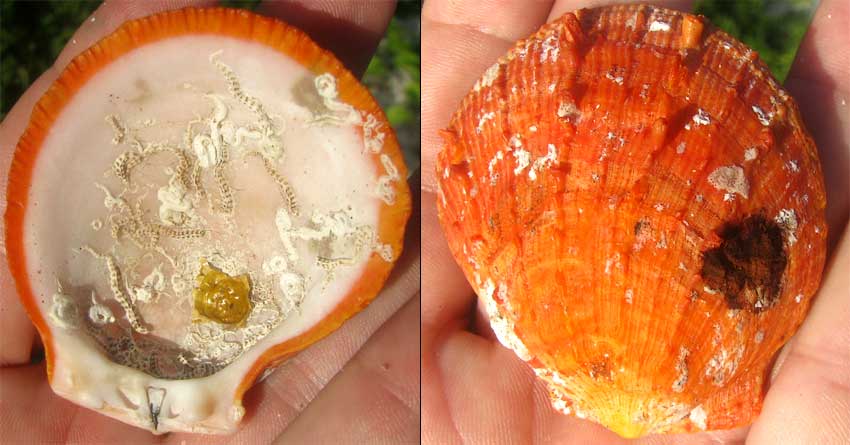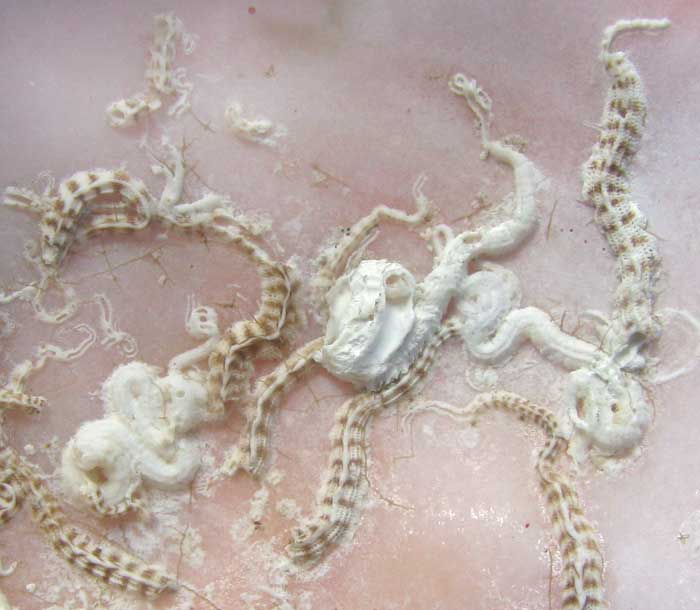Excerpts from Jim Conrad's
Naturalist Newsletter

from the September 11, 2011 Newsletter issued from Mayan Beach Garden Inn 20 kms north of Mahahual; Caribbean coastal beach and mangroves, ~N18.89°, ~W87.64°, Quintana Roo state, MÉXICO
SQUIGGLES ON OYSTER SHELLS
In the above picture of the underside of our spondylus shell, at the left, you see a bunch of squiggly lines. Up close the squiggles are more interesting, as shown below:

In that picture, notice how each squiggle begins at a tiny point, then expands toward the other end. Also, at least two kinds of squiggles are apparent, one constituting a hollow, white tube, the other looking like a tiny eel's skeleton with backbone and ribs.
On the Internet I found "Jessica's Nature Blog" with a whole page about such squiggles on oyster shells. Jessica is an ecologist in England. Her squiggles look like the wandering, solid tubes on our shell, which she calls calcareous worm tubes, and says that they're made by small marine worms of the Serpulidae family. I wrote to Jessica asking about the "eel skeleton."
She'd not seen anything like that in European waters, but she had books saying that "Serpulid worm tubes can be quite complex, look partially segmented, and have projecting features" like our "eel skeleton." Jessica's interesting "Oyster Variations" page is here.
Her page called "Two thousand years of eating oysters in the UK: an archaeological perspective" is here.
So, those squiggles on our spondylus shell are calcareous worm tubes created by "serpulid worm encrusters." "Calcareous" means that chemically the shells are like limestone, mostly composed of calcium carbonate. Other kinds of tube worms create calcareous tubes that wash onto beaches unattached to anything, looking like fossilized macaroni. The Serpulidae family belongs to the "class" of Polychaeta and the "phylum" of Annelida, so serpulid worms can more generally be referred to as both polychaetes and annelids, or segmented worms.
Tubes worms filter the water around them for food. When alarmed they retract into their tubes and close the tubes with little doorlike scales called operculums. On our shell we can see that they grow as they feed, adding length to their shells.